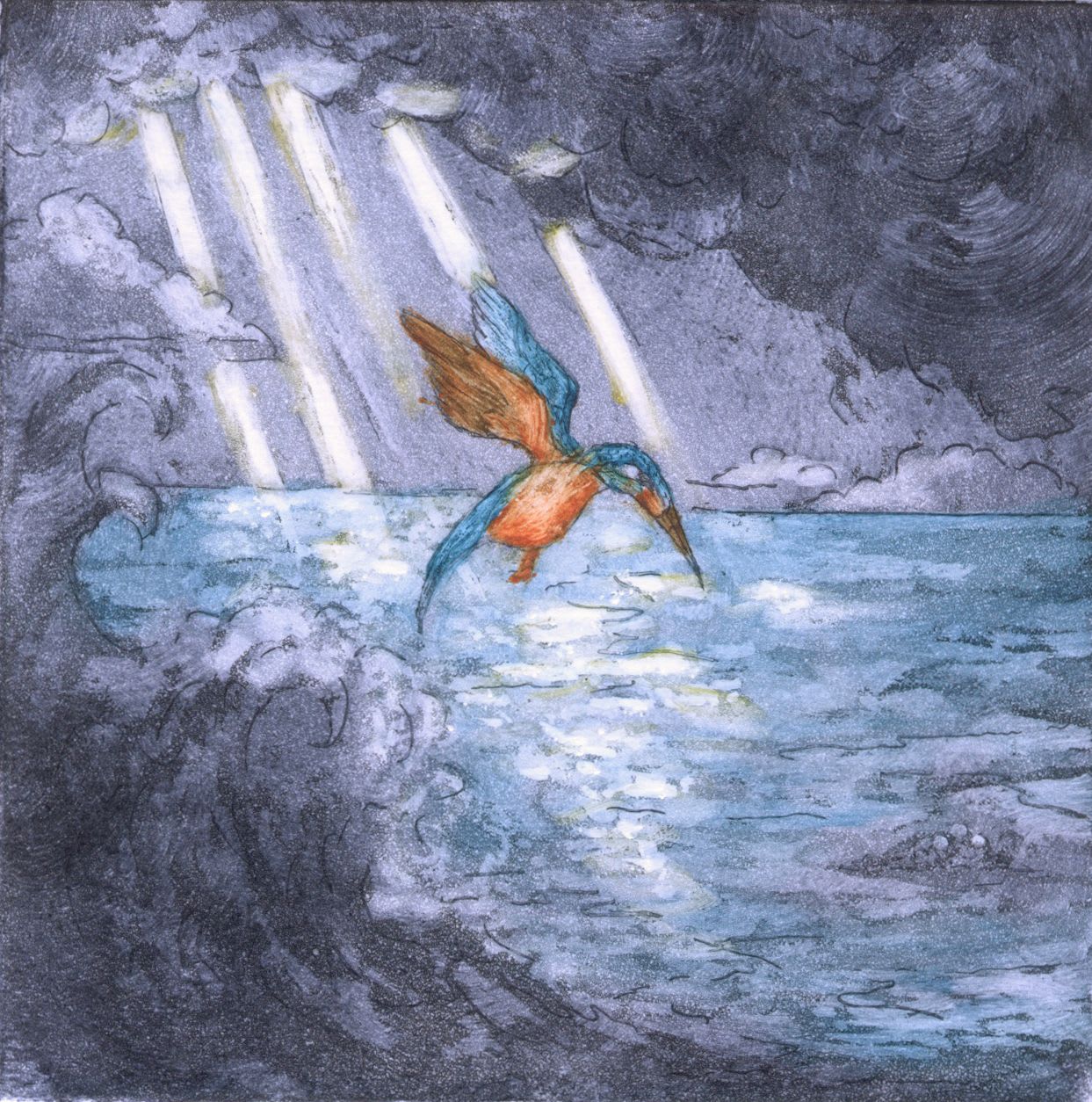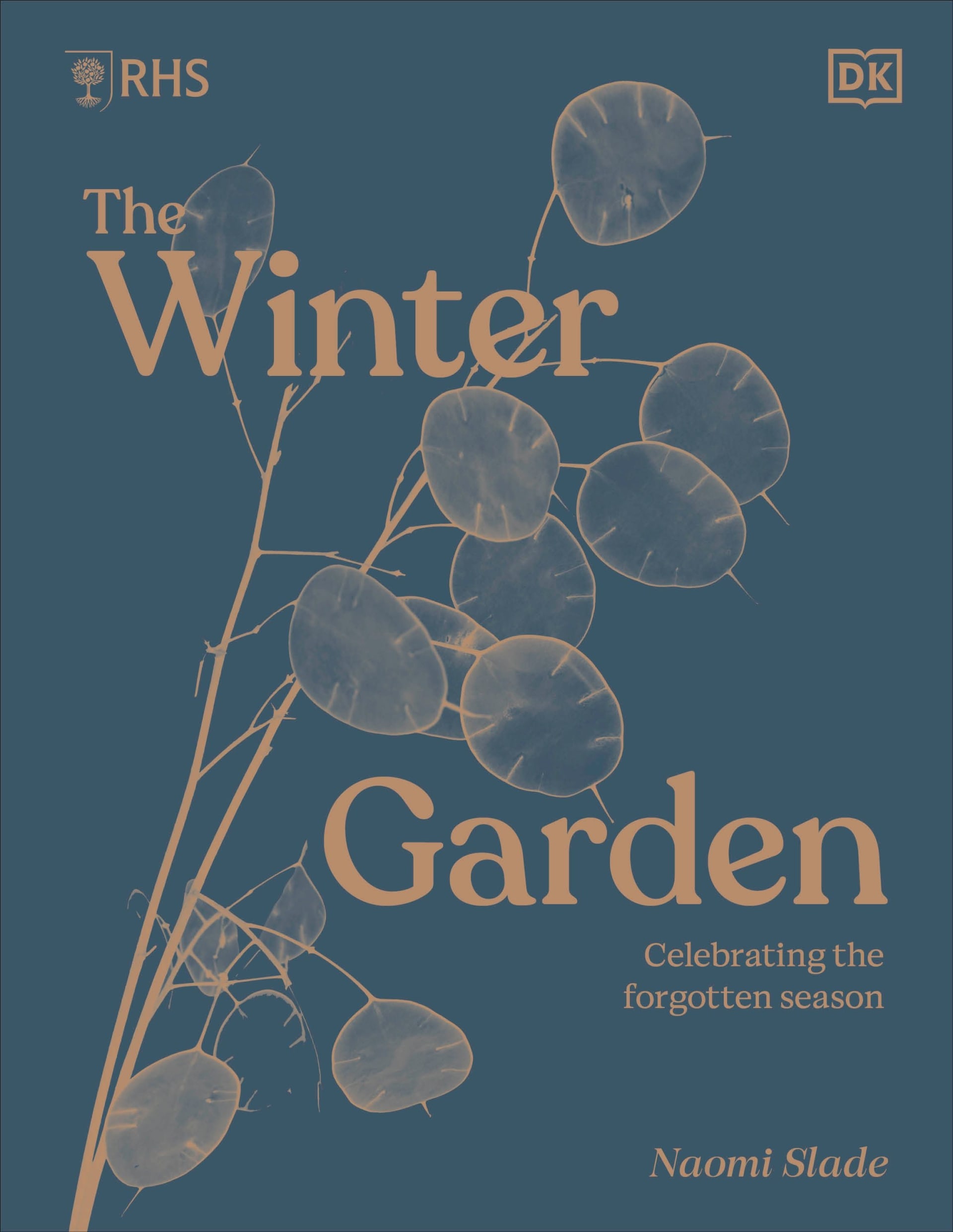As the evenings draw in, and the wind whistles around the house of an evening, the telling of fairytales and folklore is a time-honoured way to entertain family and friends, whether beside a festive fire or with in a flamboyant panto. Creation Theatre Company, for example, are presenting a glorious retelling of A Christmas Carol at Oxford’s The North Wall this month, where too, in the gallery space, you’ll find the Oxford Printmakers’ Midwinter exhibition, hot on the tails of a Myths and Legends project. Come, gather round to learn more of the mythical animals and characters they chose to showcase this autumn and hear their stories.
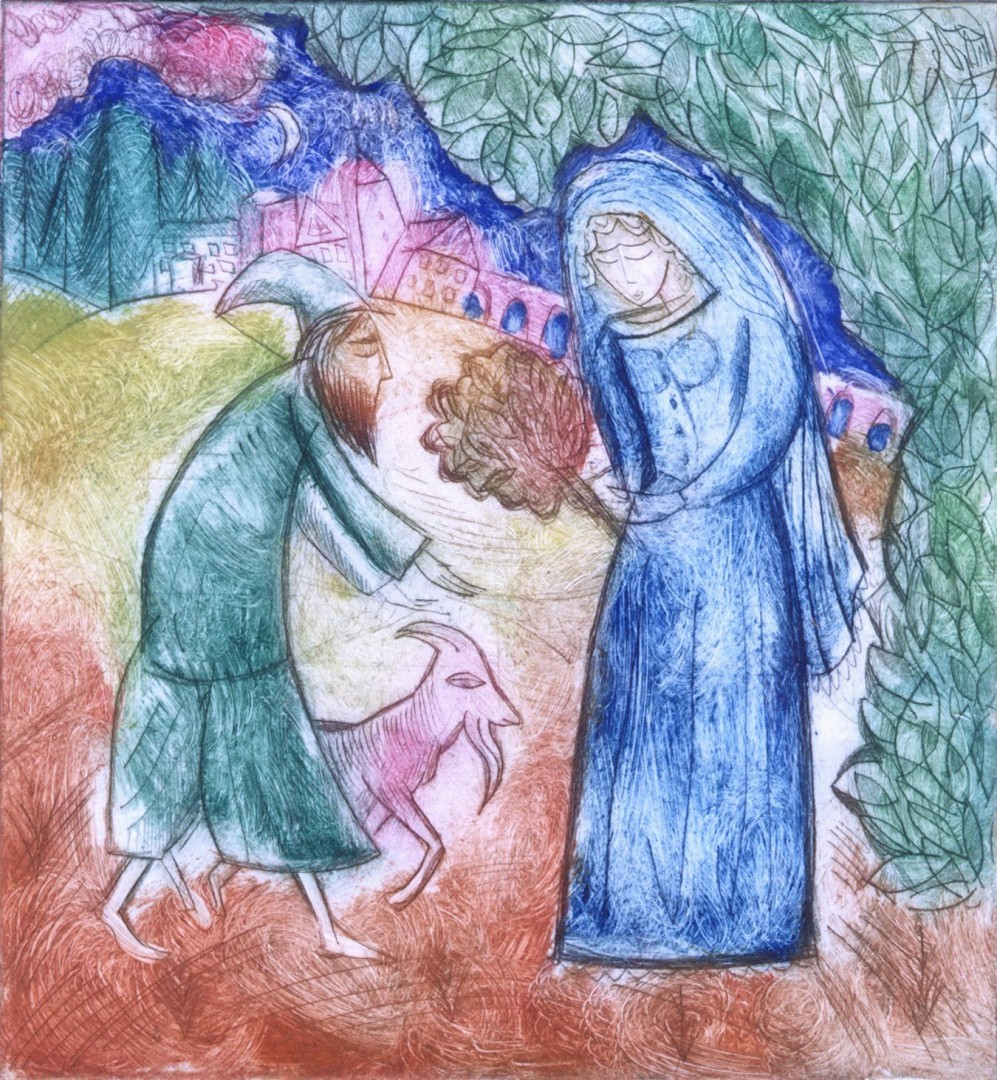
Gabriella Bailey 'Outside the City Gates'
While evocative of the nativity story, Outside the City Gate by Gabriella Bailey is actually inspired by the story of Daphnis and Chloe; a Greek pastoral romance set on the island of Lesbos. “It tells of two children brought up by goatherds and shepherds in the lush and verdant meadows outside the city of Mitylene. Daphnis and Chloe live a rustic and bucolic life, tending to their flocks of goats and sheep, away from urban society. Throughout the story their incipient love grows but, since they do not understand how to express their desire, their fraught emotions are continually tested. Finally they marry and my drypoint recalls this nuptial scene: the marriage of Chloe, adorned in her wedding dress, to Daphnis, the goatherd. By now they have discovered that their respective birth parents are noble city-dwellers, yet having been reunited with them, the two lovers decide to return to the countryside for their pastoral wedding”, explains Gabriella. “I was attracted to this myth with its imagery of the pastoral life, an ancient precedent for the longings of many people today for a more bucolic way, of life, and its tender love story,”.
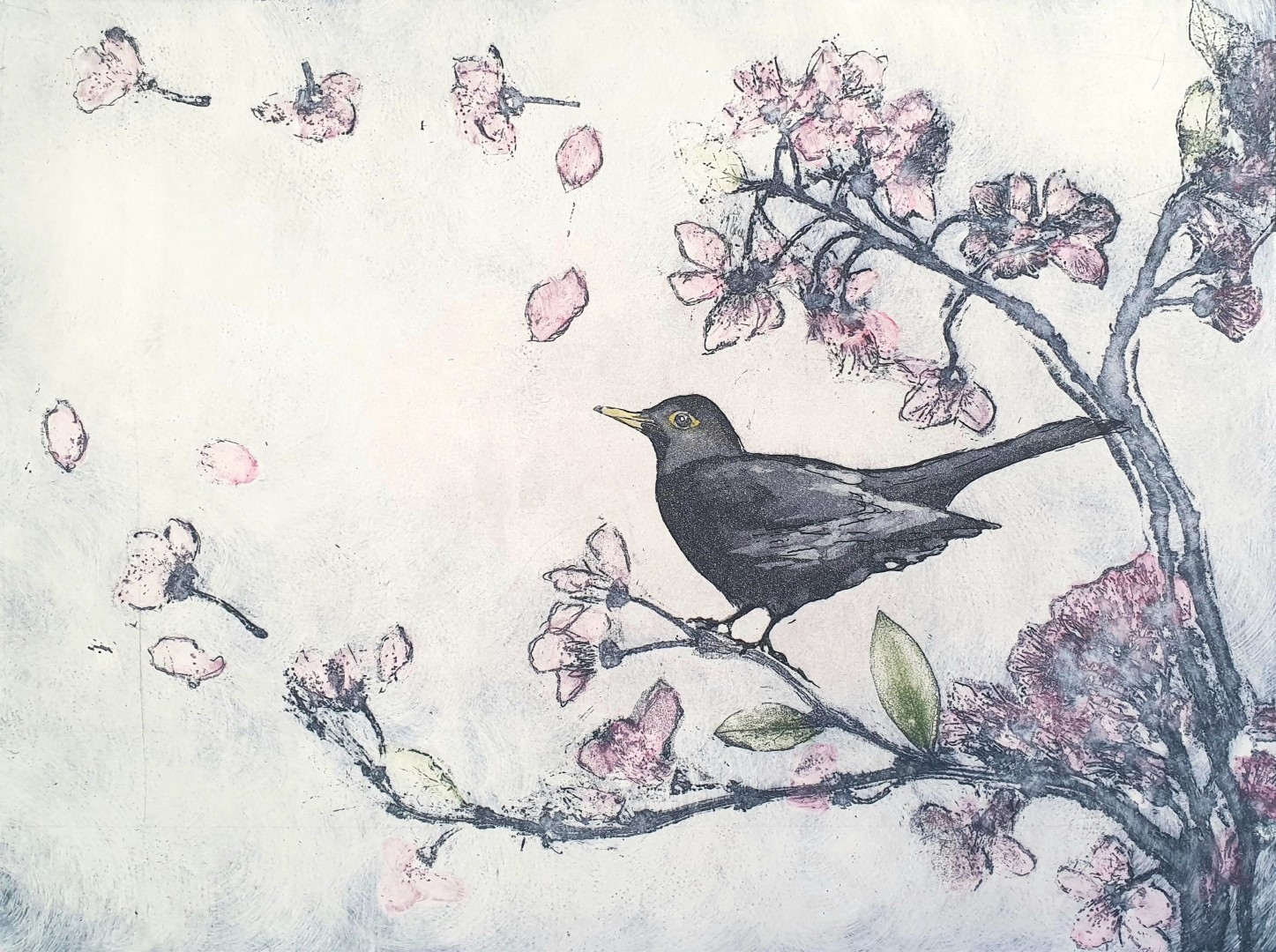
Charlie Davies 'Halcyon Days'
It's a different Greek love story that inspired Charlie Davies to create Halcyon Days. “The idea came to me whilst listening to Claudia Winkleman’s radio show, where she was interviewing Susie Dent about her favourite words. Susie was explaining the meaning of Halcyon Days and how it is derived from the Greek Myth: Alcyone and Ceyx find themselves happily married. Buoyed by their love and good fortune, begin to call each other ‘Zeus’ and ‘Hera’, much to the anger of the Gods. When Ceyx is next at sea, Zeus throws a thunderbolt at his ship and drowns him. When Alcyone discovers her husband’s fate she is overcome with grief and throws herself into the Aegean Sea intending to drown. The gods are touched by this tragic show of affection and, named after Alcyone, bring both characters back as ‘Halcyon’ birds – now known as kingfishers. Alcyone’s father Aeolus, the god of the winds, soon decrees that the seven days either side of the winter solstice will be still and stormless. Alcyone can then enjoy a period of calm in which to lay her eggs. My love of the sea and kingfishers made me want to capture this story in an etching.”
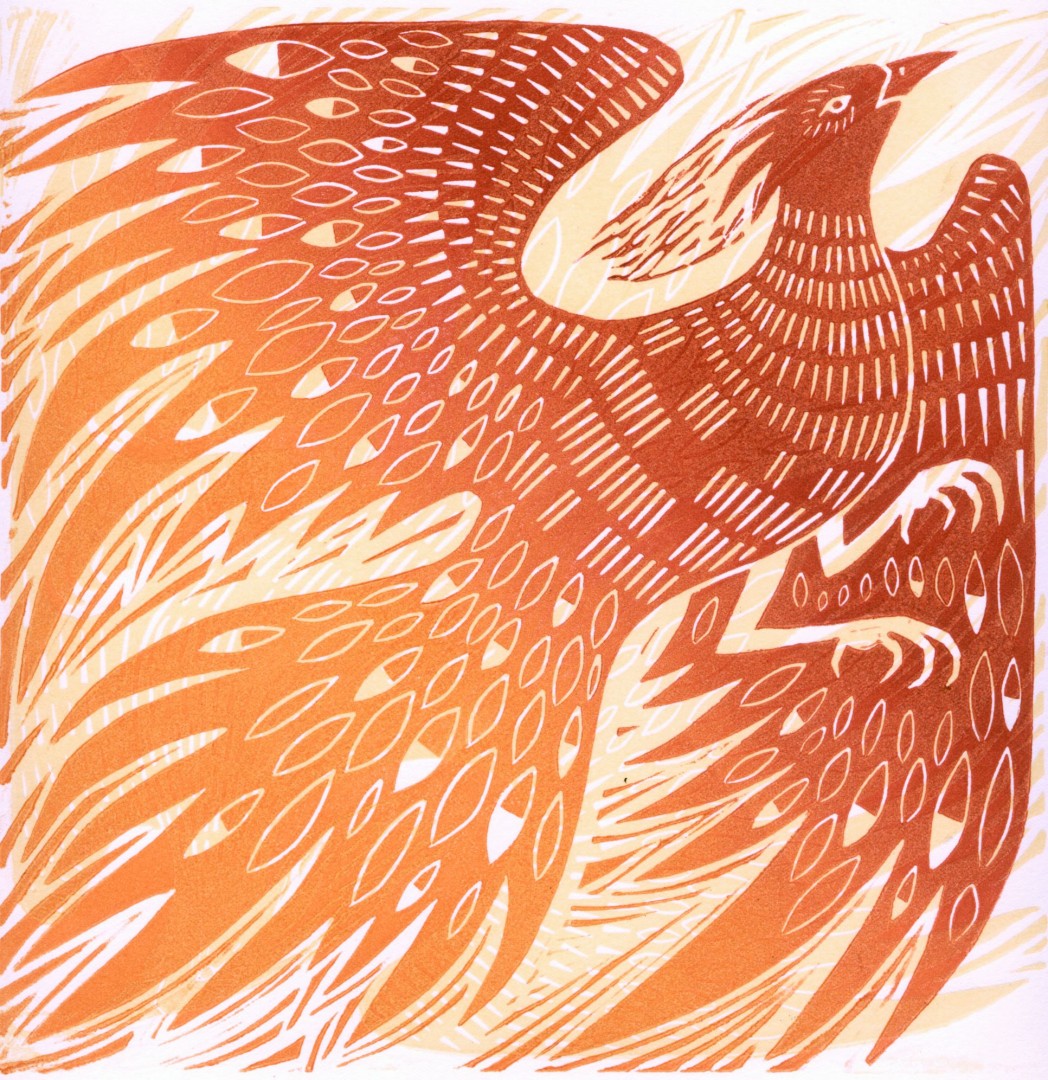
Lizzie Wheeler 'Wings of a Phoenix'
Printmaker Lizzie Wheeler’s protagonist in the linocut Wings of a Phoenix is equally luscious: “The idea of a bird of blazing feathers, rising up out of the ashes after being set of fire by the passing sun, is both visually strong and emotionally powerful,” says Lizzie. “It is a story of renewal and rejuvenation and has always been present throughout most of human history, across many cultures and religions. I like to think that for thousands of years humans have taken comfort and strength from the story; that maybe we too can rise up out of our metaphorical ashes into the sky on wings of fire. This is a two-layer lino-print. Both the pale yellow layer and the orange/red layer are printed using the same plate, but placed opposite ways up. The orange/red layer is inked with a gradient roll to create the fire-like colour effect.”
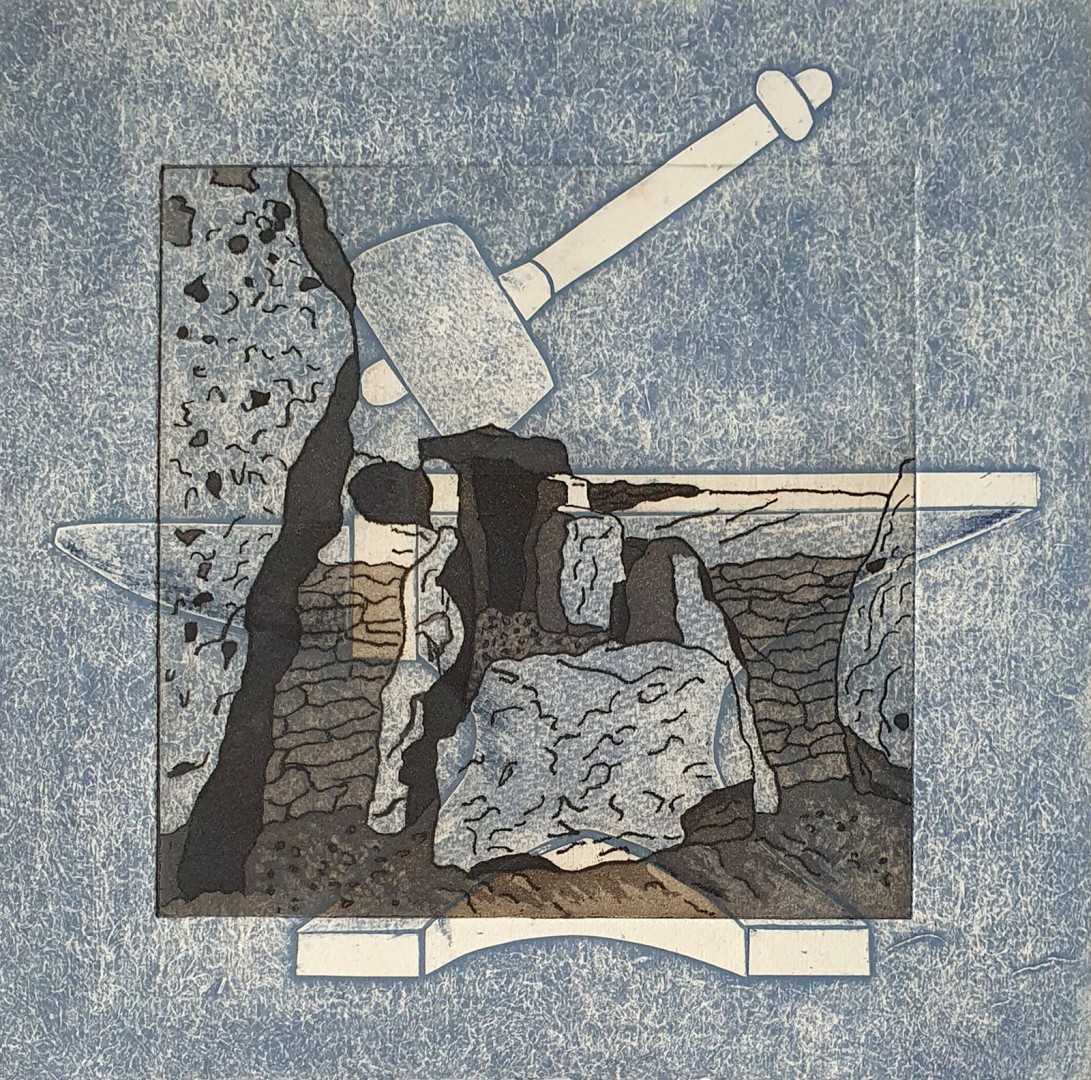
Claire Drinkwater 'Waylands' Smithy'
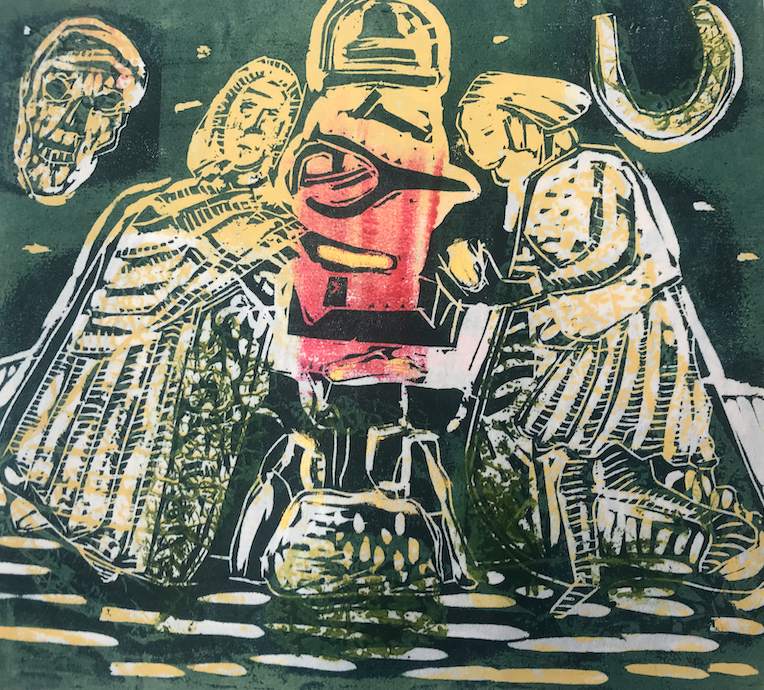
Sally Levell 'Wayland's Smithy Forge'
Also with wings and fire at its core, the mythology of Oxfordshire’s Wayland Smithy has inspired printmakers Claire Drinkwater and Sally Levell. Claire’s collograph and etching refers to both the legends and the physical landscape. “Wayland the Smith is a figure from Germanic folklore, a skilled maker of weapons and armour,” says Claire. “Like Daedalus in classical legend, he escaped from captivity by making himself wings from the feathers of birds. His smithy is an early Neolithic chambered long barrow, close to the Ridgeway, a short distance west of the Uffington White Horse. The massive stones of its entrance, and surrounding ring of trees make it an impressive and atmospheric site. Local legend says that if a horse that needs shoeing, or a tool in need of repair is left there overnight, with a small silver coin, a groat (fourpence) or a silver sixpence, in the morning the work will be done and the coin gone.’
Sally Levell’s collagraph and woodcut draws on her fascination for Anglo-Saxon mythology and the way in which it combines the religious and supernatural. “In the British Museum is Franks Casket which is a small, carved whalebone box and on one side is a depiction of the German/Norse God Wolund,” she explains. “Wolund was the God of Metal Working and on the casket are his tools of the trade which differ from later blacksmith’s tools. In the carving a robed figure is offering him something (coins?) - apparently in payment.”
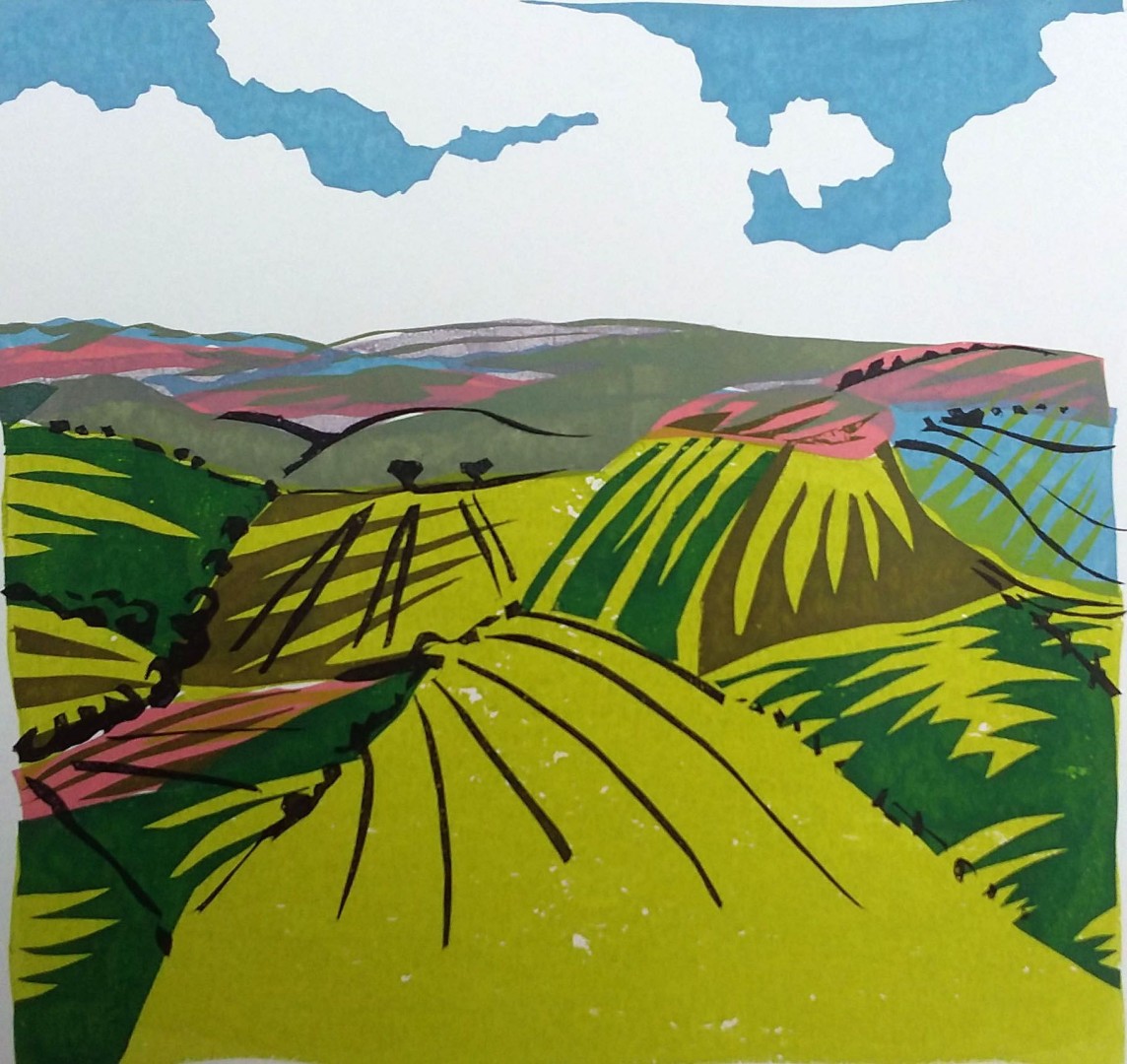
Ann Spencer 'Dragon Hill' closer in colour
And Ann Spencer’s screenprint of nearby Dragon Hill, created from a drawing of this unusual flat-topped hill that Ann made on site, has a real feeling of ancient feet having passed this way, the Ridgeway running nearby. Did George slay the Dragon here? Who knows, but there is certainly magic in this landscape.
These prints, others from the OPC Myths and Legends series, and a wide variety of seasonal art in many media can be seen as part of the Oxfordshire Artweeks on-line winter show: artweeks.org/latestshow
Many Artweeks artists also host or show their work at seasonal events during Advent.
Visit artweeks.org for further information.

